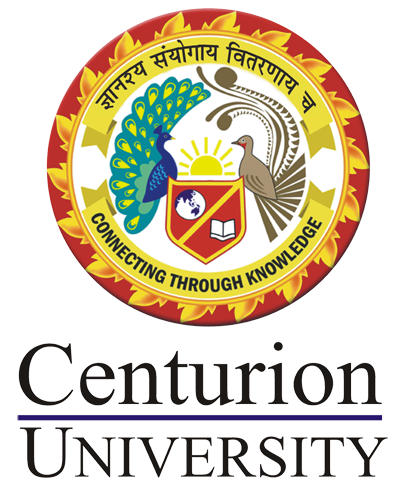Elements of Modern Physics
Course Attendees
Still no participant
Course Reviews
Still no reviews
Course Name : Elements of Modern Physics
Code(Credit) : CUTM1491(3-2-1)
Course Objectives
- This course covers certain conceptual courses of physics by virtue of which the students will be able to understand some concepts of Quantum Mechanics, Atomic Physics and Nuclear Physics.
- It also imparts the basic principles of Quantum mechanics, Schrodinger equation and its applications
- To introduce students to the fundamentals of atomic physics and nuclear physics.
- To introduce them to the basic Laser principles and Properties.
Learning Outcomes
Upon successful completion of this course, students will be able to:
- Understand and explain the differences between classical and quantum mechanics.
- Solve Schrodinger equation for simple potentials.
- Assess whether a solution to a given problem is physically reasonable.
- Identify properties of the nucleus and other sub-atomic particles.
- Describe theories explaining the structure of atoms and the origin of the observed spectra.
- Explain different Laser used and make a comparison between them.
Course Syllabus
Module-I
Planck’s quantum, Planck’s constant and light as a collection of photons; Blackbody
Radiation: Quantum theory of Light; Photo-electric effect and Compton scattering. De Broglie wavelength and matter waves; Davisson-Germer experiment. Wave description of particles by wave packets. Group and Phase velocities and relation between them. Two-Slit experiment with electrons. Probability. Wave amplitude and wave functions.
Practice 1: Measurement of Planck’s constant using black body radiation and photo-detector
Practice 2: Photo-electric effect: photo current versus intensity and wavelength of light; maximum energy of photo-electrons versus frequency of light
Practice 3 : To determine the wavelength of H-alpha emission line of Hydrogen atom.
Module-II
Position measurement- gamma ray microscope thought experiment; Wave-particle duality, Heisenberg uncertainty principle (Uncertainty relations involving Canonical pair of variables): Derivation from Wave Packets impossibility of a particle following a trajectory; Estimating minimum energy of a confined particle using uncertainty principle; Energy-time uncertainty principle- application to virtual particles and range of an interaction.
Practice 4 : To determine the ionization potential of mercury.
Module-III
Two slit interference experiment with photons, atoms and particles; linear superposition principle as a consequence; Matter waves and wave amplitude; Schrodinger equation for non-relativistic particles; Momentum and Energy operators; stationary states; physical interpretation of a wave function, probabilities and normalization; Probability and probability current densities in one dimension.
Practice 5 : To determine the value of e/m by (a) Magnetic focusing or (b) Bar magnet.
Practice 6 : To setup the Millikan oil drop apparatus and determine the charge of an electron.
Module-IV
One dimensional infinitely rigid box- energy eigenvalues and Eigen functions, normalization; Quantum dot as example; Quantum mechanical scattering and tunnelling in one dimension-across a step potential & rectangular potential barrier.
Module-V
Size and structure of atomic nucleus and its relation with atomic weight; Impossibility of an electron being in the nucleus as a consequence of the uncertainty principle. Nature of nuclear force, NZ graph, Liquid Drop model: semi-empirical mass formula and binding energy, Nuclear Shell Model and magic numbers.
Module- VI
Radioactivity: stability of the nucleus; Law of radioactive decay; Mean life and half-life; Alpha decay; Beta decay- energy released, spectrum and Pauli's prediction of neutrino; Gamma ray emission, energy-momentum conservation: electron-positron pair creation by gamma photons in the vicinity of a nucleus.
Fission and fusion- mass deficit, relativity and generation of energy; Fission - nature of fragments and emission of neutrons.
Module-VII
Lasers: Einstein’s A and B coefficients. Metastable states. Spontaneous and Stimulatedemissions. Optical Pumping and Population Inversion. Three-Level and Four-Level Lasers. Ruby Laser and He-Ne Laser. Basic lasing.
Practice 7 : To determine the wavelength of laser source using diffraction of single slit.
Practice 8 : To determine the wavelength of laser source using diffraction of double slits.
Practice 9 : To determine (1) wavelength and (2) angular spread of He-Ne laser using plane diffraction grating
Practice 10 : To show the tunneling effect in tunnel diode using I-V characteristics.
Assignments : Monte-Carlo Simulation of charged particle induced effects on various materials (SRIM & IRADINA)
Text Books:
1. Concepts of Modern Physics, Arthur Beiser, 2002, McGraw-Hill.
Reference Books:
1. Introduction to Modern Physics, Rich Meyer, Kennard, Coop, 2002, Tata McGraw Hill
2. Introduction to Quantum Mechanics, David J. Griffith, 2005, Pearson Education. Physics for scientists and Engineers with Modern Physics, Jewett and Serway, 2010, Cengage Learning.
3. Modern Physics, G.Kaur and G.R. Pickrell, 2014, McGraw Hill
4. Quantum Mechanics: Theory & Applications, A.K.Ghatak&S.Lokanathan, 2004, Macmillan
5. Modern Physics, J.R. Taylor, C.D. Zafiratos, M.A. Dubson, 2004, PHI Learning.
6. Theory and Problems of Modern Physics, Schaum`s outline, R. Gautreau and W. Savin, 2ndEdn, Tata McGraw-Hill Publishing Co. Ltd.
7. Quantum Physics, Berkeley Physics, Vol.4. E.H.Wichman, 1971, Tata McGraw-Hill Co.
Text Books (Practice)
1. Advanced Practical Physics for students, B.L. Flint and H.T. Worsnop, 1971, Asia Publishing House
Reference Books:
1. Advanced level Physics Practicals, Michael Nelson and Jon M. Ogborn, 4th Edition, reprinted 1985, Heinemann Educational Publishers
2. A Text Book of Practical Physics, I.Prakash& Ramakrishna, 11thEdn, 2011,Kitab Mahal
3. Professor Dave Explains : What is Modern Physics
Reference Books (Assignments on Monte-Carlo Simulation) : SRIM, The stopping and range of ions in matter, James F. Ziegler, Jochen P. Biersack, Matthias D. Ziegler
Session Plan
Session 1
Planck’s quantum, Planck’s constant and light as a collection of photons :
Pro Dave explains :Quantum description of light
Session 2
Session 3
Practice 1 (2 hours):
Measurement of Planck’s constant using black body radiation and photo-detector
Session 4
Session 5
Compton scattering (Assignment /Flipped Class-1) :
Session 6
Practice 2 (2 hours)
Photo-electric effect: photo current versus intensity and wavelength of light; maximum energy of photo-electrons versus frequency of light.
Session 7
De Broglie wavelength and matter waves;
The De Broglie Wavelength and the Wave Nature of Matter
Is light a particle or a wave? - Colm Kelleher
Session 8
Davisson-Germer experiment (Assignment /Flipped Class 2):
Session 10
Practice 3 (2 hours)
To determine the wavelength of H-alpha emission line of Hydrogen atom.
Session 11
Group and Phase velocities and relation between them :
Session 13
Two-Slit experiment with electrons (Assignment/ Flipped Class - 3)
Prof Dave :The Double-Slit Experiment
Quantum Mechanics - Double Slit Experiment. Is anything real? (Prof. Anton Zeilinger)
Session 15
Practice 5 (2 hours):
To setup the Millikan oil drop apparatus and determine the charge of an electron.
Session 16
Position measurement- gamma ray microscope thought experiment (Assignment /Flipped Class - 4)
Session 17
Practice 6 (2 hours) :
To determine the value of e/m by (a) Magnetic focusing or (b) Bar magnet
Session 18
Wave-particle duality, Heisenberg uncertainty principle (Uncertainty relations involving Canonical pair of variables):
The Heisenberg Uncertainty principle
Prof Dave : The Heisenberg Uncertainty Principle Part 1: Position/Momentum and Schrodinger's Cat
Session 19
Energy-time uncertainty principle- application to virtual particles and range of an interaction :
What is the Heisenberg Uncertainty Principle?
The Heisenberg Uncertainty Principle Part 2: Energy/Time and Quantum Fluctuation
Session 20
Derivation from Wave Packets impossibility of a particle following a trajectory; Estimating minimum energy of a confined particle using uncertainty principle :
Session 21
Two slit interference experiment with photons, atoms and particles; linear superposition principle as a consequence; Matter waves and wave amplitude;
Session 22
Schrodinger equation for non-relativistic particles;
Session 23
Momentum and Energy operators; stationary states; physical interpretation of a wave function,
Session 24
Probabilities and normalization; Probability and probability current densities in one dimension :
Session 25
One dimensional infinitely rigid box- energy eigenvalues and Eigen functions, normalization :
Session 26
Practice 7 ( 2 hours)
To determine (1) wavelength and (2) angular spread of He-Ne laser using plane diffraction grating
Session 27
Quantum dot as example; Quantum mechanical scattering and tunnelling in one dimension-across a step potential & rectangular potential barrier.
Session 28
Size and structure of atomic nucleus and its relation with atomic weight;
Nuclear Physics: Crash Course Physics
Session 29
Impossibility of an electron being in the nucleus as a consequence of the uncertainty principle.
Applying uncertainty principle prove that Electron cannot exist inside the nucleus
Session 31
Liquid Drop model: semi-empirical mass formula and binding energy
Session 33
Practice 8 ( 2 hours) :
To determine the wavelength of laser source using diffraction of single slit.
Session 34
Radioactivity: stability of the nucleus; Law of radioactive decay; Mean life and half-life;
An Introduction to radiation and radioactivity
Session 36
Beta decay- energy released, spectrum and Pauli's prediction of neutrino;
Session 38
Energy-momentum conservation: electron-positron pair creation by gamma photons in the vicinity of a nucleus :
Session 39
Fission and fusion- mass deficit, relativity and generation of energy; Fission - nature of fragments and emission of neutrons :
Nuclear Fission reaction explained
How Does Fusion Power the Sun?
Prof Dave explains :Nuclear Reactions, Radioactivity, Fission and Fusion
Session 40
Lasers: Einstein’s A and B coefficients.
How Lasers Work - A Complete Guide
How do Lasers Work | How Stuff Works
Session 41
Metastable states. Spontaneous and Stimulated emissions.
Difference between Spontaneous and Stimulated Emission of Radiation
Session 42
Practice 9 ( 2 hours)
To determine the wavelength of laser source using diffraction of double slits.
Session 44
Three-Level and Four-Level Lasers. Ruby Laser (Assignment/ Flipped Class 5)
Session 45
He-Ne Laser. Basic lasing (Assignment/ Flipped Class 6)
Session 46
Practice 10 ( 2 hours)
To show the tunneling effect in tunnel diode using I-V characteristics.
Session 47
Practice 11 (2 hours)
Monte-Carlo Simulation of charged particle induced effects on various materials
Session 48
Practice 12 (2 hours)
(Sputtering Calculation) Monte-Carlo Simulation of charged particle induced effects on various materials
Session 49
Assignment 7
Kinetic - Monte-Carlo Simulation of charged particle induced effects on various materials
Session 50
Assignment 8
Kinetic Monte-Carlo Simulation of charged particle induced effects on various materials
Session 51
Assignment 9
Design of structure of Kinetic Monte-Carlo Simulation of charged particle induced effects on various materials (IRADINA)
Session 52
Assignment 10
Kinetic MC Simulation on design of structure of charged particle induced effects on various materials (IRADINA)
Our Main Teachers


